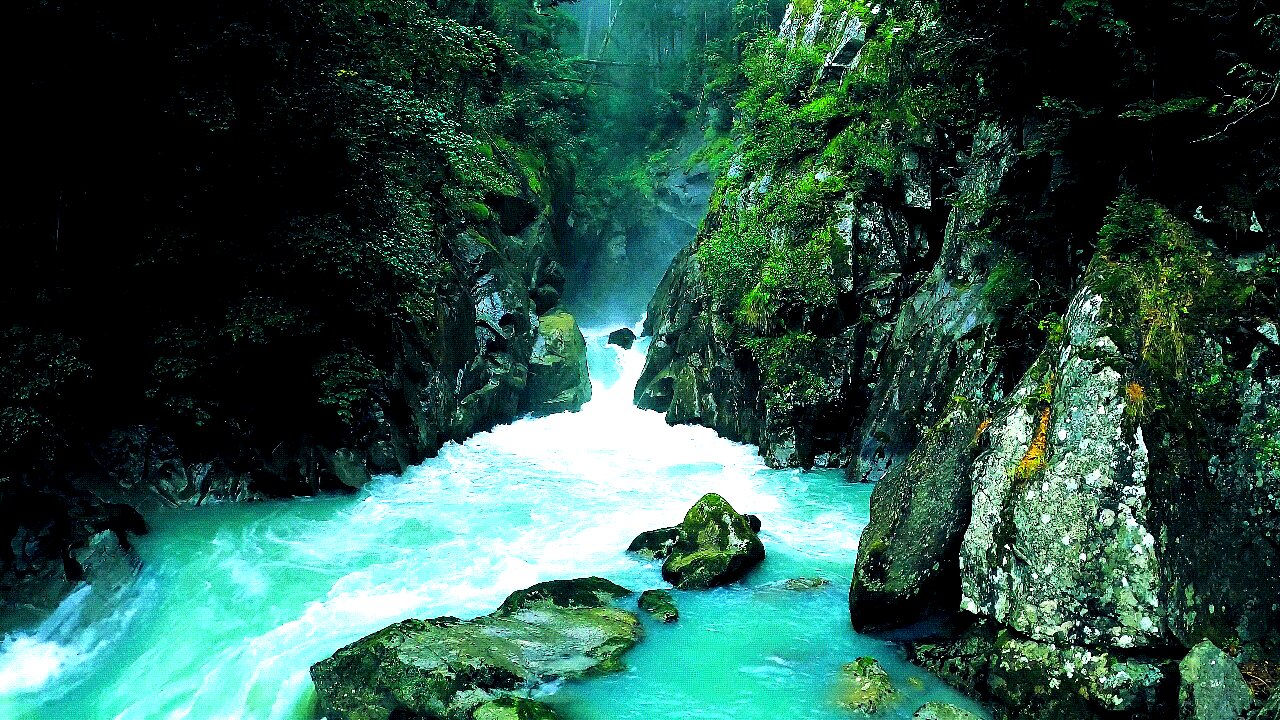Premium Only Content

The Effortless cascade streams mysteriously spouting over the stones
The waterfall is stunningly beautiful like aquatic blue as it flows gracefully downstream. A waterfall is a river or other body of water's steep fall over a rocky ledge into a plunge pool below. Waterfalls are also called cascades.
The process of erosion, the wearing away of earth, plays an important part in the formation of waterfalls. Waterfalls themselves also contribute to erosion.
Often, waterfalls form as streams flow from soft rock to hard rock. This happens both laterally (as a stream flows across the earth) and vertically (as the stream drops in a waterfall). In both cases, the soft rock erodes, leaving a hard ledge over which the stream falls.
A fall line is the imaginary line along which parallel rivers plunge as they flow from uplands to lowlands. Many waterfalls in an area help geologists and hydrologists determine a region's fall line and underlying rock structure.
As a stream flows, it carries sediment. The sediment can be microscopic silt, pebbles, or even boulders. Sediment can erode stream beds made of soft rock, such as sandstone or limestone. Eventually, the stream's channel cuts so deep into the stream bed that only a harder rock, such as granite, remains. Waterfalls develop as these granite formations form cliffs and ledges.
A stream's velocity increases as it nears a waterfall, increasing the amount of erosion taking place. The movement of water at the top of a waterfall can erode rocks to be very flat and smooth. Rushing water and sediment topple over the waterfall, eroding the plunge pool at the base. The crashing flow of the water may also create powerful whirlpools that erode the rock of the plunge pool beneath them.
The resulting erosion at the base of a waterfall can be very dramatic, and cause the waterfall to "recede." The area behind the waterfall is worn away, creating a hollow, cave-like structure called a "rock shelter." Eventually, the rocky ledge (called the outcropping) may tumble down, sending boulders into the stream bed and plunge pool below. This causes the waterfall to "recede" many meters upstream. The waterfall erosion process starts again, breaking down the boulders of the former outcropping.
Erosion is just one process that can form waterfalls. A waterfall may form across a fault, or crack in the Earth’s surface. An earthquake, landslide, glacier, or volcano may also disrupt stream beds and help create waterfalls.
-
 1:37
1:37
Expert Videos Magnetic Media
4 years agoDolphin kisses a little girl and brings her a gift
64544 -
 2:21
2:21
Gozwaldi
4 years agoPiano Music: cascade
12 -
 LIVE
LIVE
LFA TV
19 hours agoLIVE & BREAKING NEWS! | THURSDAY 11/20/25
1,124 watching -
 LIVE
LIVE
freecastle
7 hours agoTAKE UP YOUR CROSS- Let your eyes LOOK directly FORWARD, and your gaze be STRAIGHT before YOU!
67 watching -
 1:25:51
1:25:51
DeVory Darkins
4 hours agoDemocrats caught in corruption scheme as JD Vance issues MAJOR UPDATE
128K63 -
 1:48:48
1:48:48
MattMorseTV
5 hours ago $34.49 earned🔴Sedition Charges INBOUND.🔴WH Press Conference.🔴
47.1K135 -
 9:06
9:06
Jamesons Travels
20 hours ago $3.01 earnedMilitary Veterans in Congress Tell Troops to Refuse Trump's Orders
18.8K38 -

The Bold Lib
2 hours agoBOLDCHAT: Unemployment | AI | Birth Rates w/ANGELA BELCAMINO
14K -
 20:34
20:34
ArynneWexler
7 hours agoNew Poll: Women Are Done With America | NN8
15.6K29 -
 59:30
59:30
The White House
5 hours agoPress Secretary Karoline Leavitt Briefs Members of the Media, Nov. 20, 2025
52.2K28